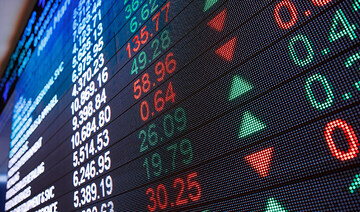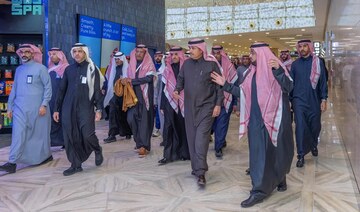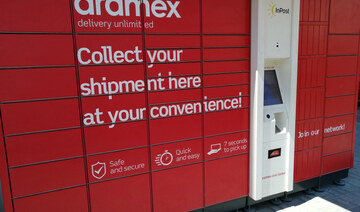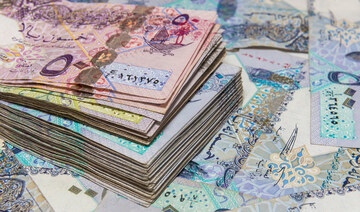A broad snapshot of Saudi Arabia’s equity landscape showed a modest uptick across the main market while the parallel market outpaced its equity peers, underscoring divergent investor dynamics on Thursday. The Tadawul All Share Index advanced marginally, while liquidity remained robust enough to reflect ongoing participation from traders. In contrast, the MSCI Tadawul Index slipped, pointing to a nuanced balance between broad market gains and selective price adjustments within the wider Saudi equity complex. Against this backdrop, the Nomu parallel market posted a solid rally, signaling continued appetite among certain investors for higher-risk, higher-volatility equities even as the main market displayed more measured movement. Within this environment, a handful of individual stocks rose decisively, while a few key names retraced notable portions of their intraday gains, illustrating the mixed sentiment that characterized the session.
Market snapshot and key indices
The day’s trading activity highlighted a marginal uplift in the Tadawul All Share Index, which closed at 12,097.75 after gaining 9.01 points, equivalent to a 0.07 percent rise. This move, while modest in percentage terms, reflects a continuation of a trading pattern where broad indices drift in narrow bands even as pockets of momentum emerge among specific securities. The total turnover on the benchmark index reached 7.48 billion Saudi riyals, roughly 1.99 billion U.S. dollars, underscoring a healthy level of liquidity that supports price discovery and everyday trading activity. In terms of breadth, 96 stocks advanced, while a larger cohort of 133 declined, indicating that the day’s gains were concentrated in a subset of names rather than widespread across the market. This kind of distribution—more decliners than advancers with a small number of standouts delivering incremental gains—often points to investors selectively rotating into favorites or hedging positions amid a cautious risk environment.
On the flip side, the MSCI Tadawul Index, which tracks a broader set of Saudi market equities through a standardized framework for international investors, ended the session down by 3.28 points, translating to a 0.22 percent decrease to close at 1,510.14. The divergence between the Tadawul All Share Index and the MSCI Tadawul Index can signal several possible dynamics, including differences in constituent coverage, sector weightings, and the reaction of foreign capital to domestic catalysts during the session. A decline in the MSCI measure does not negate the observed activity in the main exchange; instead, it may reflect differing sector exposures or valuation adjustments among stocks that are closely watched by foreign participants.
Meanwhile, the Kingdom’s parallel market—Nomu—enjoyed a different trajectory, finishing the day higher by 251.24 points, or 0.82 percent, at 31,027.39. The Nomu index’s positive move came as 56 of its listed stocks advanced, while 32 declined. The Nomu market, known for its higher risk-reward profile and lower liquidity relative to the main market, often serves as a barometer for speculative interest and emerging ideas within the local equity ecosystem. A broad advance across more than half of Nomu’s constituents indicates that risk-seeking traders found value in price patterns or anticipated catalysts that could push certain businesses into a more favorable trajectory at the margins.
In sum, the trading day presented a bifurcated picture: a cautiously positive tone on the main index punctuated by a stronger performance in the Nomu market, all set against a backdrop of net declines in the international-style benchmark that tracks the dynamics of Saudi equities. The broad spread of advances and declines across the main market suggests that investors were differentiating between individual stories and macro-level expectations, favoring some names with visible earnings or strategic prospects while remaining selective about other positions. The combined effect of these movements is a market that continues to price in near-term uncertainty while rewarding certain contributors with incremental gains, and it reinforces the importance of stock-specific analysis in a market characterized by varied risk appetites and investment horizons.
Index components and implications for investors
For investors who focus on index-level behavior, the modest gain in the Tadawul All Share Index demonstrates that the market’s underlying breadth remains fragile—enough strength to push prices higher, but not so robust as to generate broad, across-the-board appreciation. The combination of a slight uptick in the main index with simultaneous declines in the MSCI Tadawul Index can prompt market participants to re-evaluate sector exposures, as some sectors may be outperforming while others lag. This dynamic often leads to a rotation where capital moves toward sectors or stocks that exhibit better earnings visibility, stronger balance sheets, or more favorable mid-to-long-term fundamentals, even if those attributes are not immediately reflected in the headline index.
From a liquidity perspective, the SR7.48 billion turnover signals ongoing engagement from traders and institutions who seek opportunities across a mix of large-cap and mid-cap names. A robust turnover like this can support tighter bid-ask spreads and more efficient price discovery, which in turn helps investors better assess fair value in a market with mixed signals about the near-term trajectory. The net effect for international readers is a view of a domestic market that remains active and differentiated, with day-to-day movements influenced by a blend of earnings expectations, macro commentary, policy signals, and sector-specific catalysts—elements that collectively shape valuation rhythms for Saudi equities.
To navigate this environment, investors often focus on stock-level catalysts: earnings releases, strategic announcements, management commentary, and corporate actions. While the indices provide a high-level snapshot, the true drivers of daily gains or losses tend to be the stories behind individual names—the companies that offer potential for value realization either through operational improvements, restructurings, or favorable market conditions for their products and services. For esa investors, the takeaway is to complement index awareness with targeted stock research, particularly in segments showing resilience or new momentum, while staying mindful of the risk-reward balance that characterizes a market with mixed signals.
Nomu performance and stock-specific movers
The Nomu parallel market’s standout performance on Thursday underscores a willingness among investors to pursue higher-risk opportunities within the Saudi equity landscape. Nomu’s rise by 251.24 points confirms a positive trajectory for many constituents, driven by a combination of speculative interest, liquidity dynamics, and possible expectations of corporate developments that can unlock value in smaller or recently listed entities. The gain, coupled with a majority of Nomu stocks trading higher, highlights how investor appetite on Nomu can diverge markedly from the main market’s more restrained movement. In this environment, Nomu can function as a laboratory for new business ideas, growth-oriented ventures, and dynamically priced growth bets where price momentum may build faster than on the main market.
Among the most notable performers within Nomu, the session’s leadership was characterized by broad-based participation rather than a single, outsized mover. However, the index’s advance was driven by a swelling of price strength across 56 advancing stocks versus 32 decliners. This broad-based participation suggests a phase of risk-taking where investors are embracing a breadth-led rally rather than a narrow, handful-of-names-driven surge. The implications for market participants are twofold: first, Nomu’s performance reflects a segment of investors who are seeking higher alpha and are more tolerant of volatility; second, it signals that there is liquidity presence and trading activity in the parallel market that can spill over into the main market if risk appetite broadens and if certain Name-driven narratives gain traction.
Turning to the concrete stock-level highlights, Nice One Beauty Digital Marketing Co. emerged as the best performer for the second day in succession. Its shares rose by 7.69 percent to reach SR49, a move that underscores the dynamics of growth-oriented businesses within Nomu and the willingness of traders to price in potential upside from new or under-the-radar growth ideas. The significance of such incremental gains tends to be amplified on Nomu due to the market’s inherently higher volatility and lower liquidity, which can magnify percentage changes when even modest shifts in sentiment occur.
Other notable Nomu movers included Fawaz Abdulaziz Alhokair Co., whose stock rose by 6.5 percent to SR14.74. This performance points to an environment where consumer-facing enterprises in Nomu attract attention from traders seeking exposure to retail and consumer services with potential for expansion or rebranding opportunities. Abdullah Saad Mohammed Abo Moati for Bookstores Co. also stood out with a 4.42 percent increase, lifting its price to SR35.45 and marking a continuation of the stock’s positive price action. These gains reflect the market’s assessment of growth and revenue potential in specialized retail and services segments represented in Nomu’s roster.
Beyond these names, other companies such as Arabian Pipes Co. and Dr. Sulaiman Al Habib Medical Services Group posted gains of 4.10 percent and 3.89 percent, respectively, advancing to SR12.70 and SR298.80 as liquidity and sentiment favored a broad-based ascent across Nomu’s diverse sector mix. The gains across industrial and healthcare-adjacent plays highlight Nomu’s capacity to reflect varied business models, from manufacturing and distribution to high-growth healthcare services, within the parallel market’s framework.
On the downside, the Nomu session identified Salama Cooperative Insurance Co. as the day’s worst performer, with its share price decreasing by 5.88 percent to SR19.52. While Nomu is home to dynamic upswings, negative price action in certain names illustrates the volatility and risk management considerations that define investment activity in the parallel market. Additionally, Almoosa Health Co. and Al Hassan Ghazi Ibrahim Shaker Co. faced declines of 5.13 percent and 3.91 percent, ending at SR133.20 and SR28.25, respectively. These movements emphasize the breadth of Nomu’s risk spectrum, where gains and losses can be pronounced on the back of company-specific news, operational updates, or shifts in investor sentiment.
In sum, Nomu’s performance on Thursday reflected a risk-on environment within the parallel market, where investors gravitated toward a mix of growth-oriented, retail, and healthcare-related opportunities, even as some participants reevaluated positions in lagging names. The market’s breadth- driven advance suggested a broader interest across Nomu’s stock universe, with price action that could signal further opportunities if liquidity and investor confidence remain robust in the days ahead.
What Nomu’s performance implies for the broader market
Investors watch Nomu as a gauge of risk appetite and a potential feeder for liquidity into the main market. When Nomu experiences sustained gains across a broad portion of its constituents, it can be interpreted as an indicator of elevated risk tolerance among traders and institutions seeking non-core exposure while awaiting catalysts in larger cap names. Conversely, pronounced declines in Nomu can reflect heightened caution or profit-taking among speculative traders, potentially foreshadowing a broader risk-off trend that could spill into the main market if liquidity tightens or if macro cues shift toward caution.
From a portfolio construction perspective, Nomu often serves as a hedge against more conservative main-market plays or a catalyst for diversification across different risk profiles. For investors with a longer time horizon, Nomu’s strength could indicate opportunities for entry points into smaller or growth-oriented firms, while for traders with a shorter horizon, the daily volatility can present opportunities for short-term gains, provided risk controls are in place. In any case, Nomu’s day-to-day movements offer valuable insights into the evolving appetite for risk among Saudi investors and the willingness of market participants to pursue higher return profiles even in a volatile environment.
Stock-specific movers on the main market
Within the main market, several notable movements captured trader attention as part of the day’s activity. The best-performing names included some of the market’s more recognized players, with several posting gains that outpaced the overall index. For instance, certain consumer-focused and industrials-related equities moved decisively higher, reflecting a blend of company-specific momentum and broader market sentiment. The performance of these stocks—whether driven by better-than-expected earnings, strategic announcements, or favorable price dynamics—contributed to the overall positive tone of the market, even as the broader index experienced only a modest increase.
Conversely, the session also featured notable declines among select mainstream equities. Among the laggards, a few names faced selling pressure that led to meaningful percentage drops. These declines, while not indicative of a market-wide trend, underscore the importance of careful stock-level analysis and risk management for investors who are navigating the breadth of opportunities in Saudi equities. The mixed performance among large-cap and mid-cap stocks, with some rising and others retreating, highlights the market’s sensitivity to sector rotations, earnings cues, and shifting investor expectations.
This dispersion in stock performance—where standout gainers coexist with notable decliners—emphasizes an essential takeaway for market participants: success in the Saudi equity market requires a discerning approach that blends macro-level awareness with granular stock research. Investors should monitor not only the headline indices but also how individual companies are positioning themselves in the context of industry dynamics, regulatory environments, and consumer demand patterns. The day’s activity confirms that opportunities exist across a spectrum of equities, and even modest overall market gains can be complemented by meaningful advances in select stocks that demonstrate fundamental strength or compelling growth narratives.
Corporate announcements and debt securities
A key corporate development of the session related to Riyad Bank, which announced its intention to fully redeem its $1.5 billion fixed-rate reset tier 2 sukuk that was issued in February 2020. The redemption is scheduled for February 25, 2025. According to a Tadawul statement, the sukuk, originally maturing in 2030, will be redeemed at face value in accordance with the terms and conditions that governed the issue. The redemption is expected to include any accrued but unpaid periodic distributions, ensuring that investors receive the full entitlement tied to the instrument up to the redemption date.
On the redemption date, Riyad Sukuk Limited will deposit the full amount into the accounts of the sukuk holders, signaling the completion of the issuance and the conclusion of the sukuk’s life. The process is designed to return the principal to investors while removing the security from further value in the market beyond the redemption event. The regulatory approvals for this action underscore the alignment of capital markets oversight with corporate financing decisions, ensuring investor protection and orderly execution of the redemption.
The market’s response to this corporate action could influence perceptions of Riyad Bank’s funding strategy and its balance sheet management strategy ahead of the planned redemption date. The event also has potential implications for Sukuk investment strategies more broadly, as fixed-rate reset tier 2 instruments are a common financing tool used by banks to diversify funding sources and manage maturities with an eye toward regulatory and liquidity considerations. The mechanics of the redemption reflect established sukuk market practices, including the deposit of funds with sukuk holders and the withdrawal of any future obligations related to that security.
Riyad Bank’s stock, meanwhile, closed the day up by 0.91 percent at SR27.85, signaling a modest positive reaction from investors amid the broader market context and the news of the upcoming sukuk redemption. The price movement for Riyad Bank shares may reflect a combination of domestic market dynamics and investor expectations about the bank’s capital structure and funding strategy as it moves toward the redemption date. The interaction between the bank’s equity performance and its debt instruments can offer insights into how investors balance equity risk with fixed-income exposures in a diversified Saudi portfolio.
Implications of the sukuk redemption for investors
For holders of the fixed-rate reset tier 2 sukuk, the redemption event represents the conclusion of a multi-year instrument that served as a funding vehicle for the issuer. At redemption, investors receive the face value of the instrument along with any accrued distributions up to that date. This event may require portfolio managers to adjust exposures, reallocate capital, or rebalance risk profiles in response to the removal of a long-dated instrument from the investor’s holdings. For traders and market participants, the redemption can influence liquidity and pricing dynamics in related debt markets, as the redemption reduces outstanding supply and may impact the pricing of similar instruments.
From a broader market perspective, such corporate actions can shape investor sentiment around sector funding strategies and the reliability of fixed-income instruments as a financing tool within Saudi Arabia’s financial ecosystem. Banks and financial institutions may pay attention to how the market absorbs the redemption and whether any secondary-market activity emerges around similar securities, particularly those with comparable duration, coupon profiles, or reset mechanics. The interplay between corporate actions and equity performance is nuanced, and a redemption event can sometimes affect the perception of risk, liquidity, and capital allocation decisions across a diversified portfolio.
Day’s close and market tone
As Thursday drew to a close, Riyad Bank’s stock continued to trend higher, finishing at SR27.85 after a daily gain of 0.91 percent. The broader market tone remained positive, with the Tadawul All Share Index supporting a cautious but constructive sentiment among investors. The combination of a slight uptick in the main index, a significant advance in Nomu, and a notable corporate redemption announcement created a day characterized by measured optimism tempered by attention to sector dynamics and corporate actions.
For market participants, the session’s outcomes reinforce several key themes in the Saudi equity landscape. First, there remains a clear appetite for selective names that offer growth potential or strategic significance, even as the market as a whole shows only modest gains. Second, the Nomu market continues to function as an arena for investors seeking exposure to more speculative ideas or smaller-cap opportunities, with the potential for outsized moves relative to the main market. Third, corporate actions such as sukuk redemptions illustrate the dynamic interplay between equity and fixed-income markets, highlighting how issuers manage risk and funding maturity profiles while investors adapt to evolving opportunities.
Investors should remain attentive to how these dynamics could evolve in the near term. The combination of day-to-day price movements, ongoing corporate actions, and the evolving macro backdrop can generate a range of potential scenarios for Saudi equities, from continued modest gains to more pronounced rotations across sectors that reflect changing risk appetites, policy signals, and earnings trajectories. A disciplined approach—emphasizing stock-level analysis, risk management, and a clear view of investment objectives—will continue to serve market participants well as they navigate a market that presents both opportunities and uncertainties in equal measure.
Implications for investors and future outlook
The session’s blend of a modest main-market gain, robust Nomu performance, and a significant sukuk redemption announcement paints a picture of a market that rewards differentiated thinking and disciplined execution. For long-only investors, the data points suggest focusing on stocks with clear earnings visibility, durable competitive advantages, and sound balance sheets, while maintaining vigilance around risk metrics and liquidity. For traders, the Nomu segment’s activity demonstrates that there can be meaningful opportunities in smaller, growth-oriented names, albeit accompanied by heightened volatility and liquidity risk that requires robust risk controls and well-defined exit strategies.
From a macro perspective, the day reflects the ongoing evolution of Saudi Arabia’s financial markets, where domestic equity benchmarks coexist with parallel-market dynamics and internationally watched indices. The interplay among main-market performance, parallel-market momentum, and debt market actions underscores the need for a comprehensive view of the market ecosystem. Investors who integrate cross-market signals—such as sector rotations, corporate financial actions, and macroeconomic developments—are likely to be better positioned to identify convergences and opportunities amid varying levels of risk.
The practical takeaway for market participants is to combine a careful reading of headline indices with a granular assessment of corporate stories, sector context, and liquidity conditions. By staying attuned to both broad market movements and stock-specific catalysts, investors can build diversified portfolios that balance potential upside with prudent risk management. As Saudi markets continue to adapt to evolving global and domestic conditions, the balance between cautious optimism and selective risk-taking will likely shape the trajectory of equity performance in the weeks and months ahead.
Conclusion
In a day marked by nuanced movements across Saudi Arabia’s equity landscape, the Tadawul All Share Index posted a modest gain as Nomu delivered a robust climb, underscoring divergent risk appetites among market participants. The MSCI Tadawul Index softened, suggesting that foreign-facing benchmarks weighed on some segments of the market even as domestic traders identified value opportunities inside the main and parallel markets. The standout Nomu performers, including Nice One Beauty Digital Marketing Co., Fawaz Abdulaziz Alhokair Co., and Abdullah Saad Mohammed Abo Moati for Bookstores Co., highlighted the appeal of growth-oriented and consumer-focused names within the parallel market, while the declines in select names like Salama Cooperative Insurance Co. and others reminded investors of the inherent volatility in smaller-cap equities.
Corporate news also shaped sentiment, with Riyad Bank signaling a planned full redemption of its $1.5 billion fixed-rate reset Tier 2 sukuk set for February 2025. The redemption’s mechanics—redeeming at face value and depositing the funds with sukuk holders—emphasize the orderly closure of a funding instrument and the impact such events can have on both debt and equity markets. The market closed with Riyad Bank up 0.91 percent, reflecting a cautious but positive reception to the bank’s strategic move and to the day’s broader price action.
As investors digest these developments, the key themes remain clear: selective stock leadership on the main market, broad participation and higher volatility on Nomu, and the ongoing influence of corporate actions on market dynamics. The Saudi market’s evolving structure—spurred by policy reforms, increased foreign participation attention, and a growing ecosystem of listed entities—suggests a continued landscape of opportunities tempered by the need for careful risk management and a detailed assessment of each security’s fundamentals. The day’s outcomes reinforce the value of a disciplined approach that blends macro awareness with micro-level insights, enabling market participants to navigate a complex yet increasingly dynamic financial environment.



